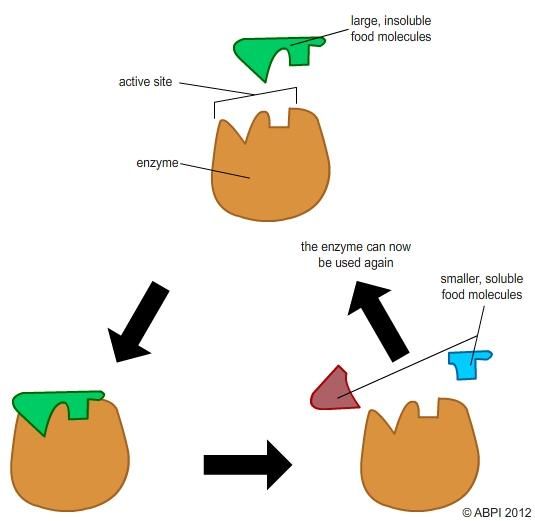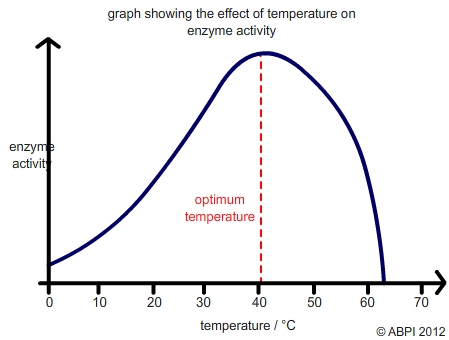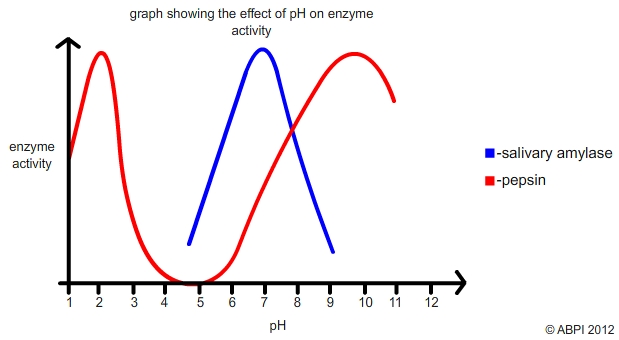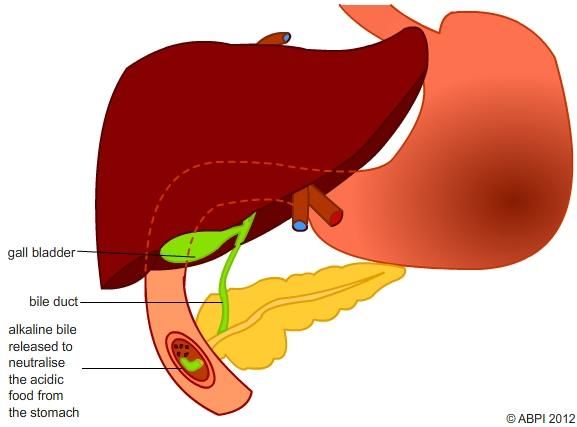This topic takes on average 55 minutes to read.
There are a number of interactive features in this resource:
 Human biology
Human biology
 Biology
Biology
 Physical education
Physical education
 PSHE / Citizenship studies
PSHE / Citizenship studies
The most important function of physical digestion is to increase the surface area of the food you eat. This makes it easier for enzymes to act on the large insoluble food molecules and break them down into small soluble ones.
An enzyme is a protein molecule. Each type of enzyme catalyses a particular reaction or type of reaction. They can do this because the long chains of amino acids which make up the enzyme are folded into a particular shape known as the active site. The substrates of the reaction fit into the active site of the enzyme. This works like a lock and key. Once the substrate is in place in the active site, it binds to the enzyme and the reaction then takes place rapidly. The products of the reaction are released from the surface of the enzyme.

Enzymes are affected by anything which changes the shape of the active site. Temperature and pH can both affect the active site and so alter the activity of the enzyme.

The effect of temperature on enzyme action.

The effect of pH on enzyme action
The chemical breakdown of food in the body depends on the action of enzymes. The digestive system has a number of adaptations which help in this chemical breakdown.
Enzymes in the digestive system speed up the breakdown of the food. Enzymes are made in many places along the digestive system.
Enzymes are named according to the type of food molecule that they break down. This is fairly logical but sometimes you may find older names like amylase (carbohydrase), pepsin and trypsin (protease).
| Place produced | Enzyme | Substrate (what it digests) |
|---|---|---|
| Mouth | Amylase (carbohydrase) | Starch |
| Stomach | Pepsin (protease) | Protein |
| Pancreas | Carbohydrase Protease Lipase |
Carbohydrates Proteins Lipids |
| Ileum (small intestine) | Carbohydrase Protease Lipase |
Carbohydrates Proteins Lipids |
The stomach is a very harsh environment. Specialised cells in the stomach wall produce large amounts of hydrochloric acid and this means that the stomach is about pH 2. The low pH provides an environment that allows the protease enzyme pepsin to be active. This starts the digestion of proteins as the food is churned around in the stomach.
The acid in the stomach also helps to kill any bacteria that may be on the food. It is not foolproof though because some microorganisms that cause food poisoning are adapted to be able to survive in the stomach acids.
The acid can sometimes cause stomach ulcers if the protective layer on the inside of the stomach wall is damaged.
Bile is produced in the liver and stored in the gall bladder. As food leaves the stomach, bile is squirted along the bile duct and into the duodenum. It is extremely important as it helps to neutralise the acidic contents of the stomach as they enter the top of the small intestine. This prevents the acid from damaging the small intestine which is kept at a pH of about 7.4 (just slightly alkaline). This is the optimum pH for the carbohydrases, proteases and lipases made in the pancreas and in the small intestine itself to work.
